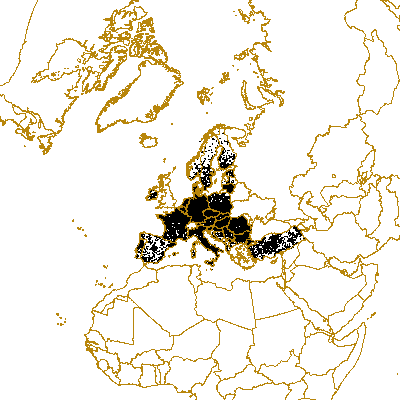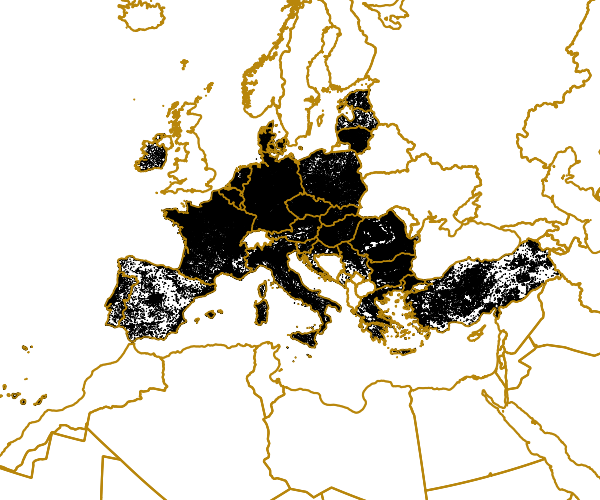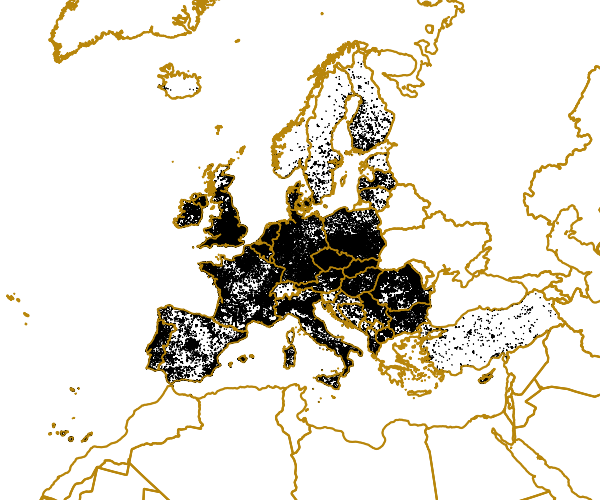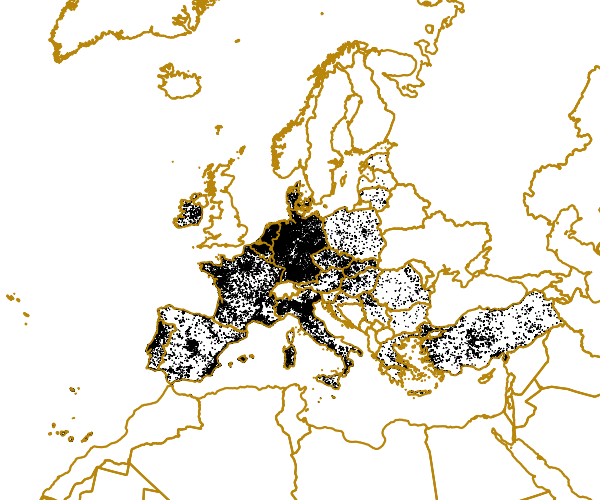household
Type of resources
Topics
INSPIRE themes
Keywords
Contact for the resource
Provided by
Years
Formats
Representation types
Update frequencies
status
Scale
-

Changes between UMZs in 2000 and UMZs in 2006 using CLC version 13. Most changes are Positive changes, understood as areas of urban sprawl (i.e. new UMZ areas between 2000 and 2006), while negative changes describe the reduction of a certain UMZ between 2000 and 2006 (warning: some negative changes might be due to different interpretations between 2000-2006).
-

A UMZ is defined as a "set of urban areas laying less than 200 m apart". Urban areas have been selected from Corine Land Cover 1990, version 13, by means of a complex methodology explained below.
-

A UMZ is defined as a "set of urban areas laying less than 200 m apart". Urban areas have been selected from Corine Land Cover 2006, version 13, by means of a complex methodology explained below.
-

Changes between UMZs in 1990 and UMZs in 2000 using CLC version 13. Most changes are Positive changes, understood as areas of urban sprawl (i.e. new UMZ areas between 1990 and 2000), while negative changes describe the reduction of a certain UMZ between 1990 and 2000 (warning: some negative changes might be due to different interpretations between 1990-2000).
-

A UMZ is defined as a "set of urban areas laying less than 200 m apart". Urban areas have been selected from Corine Land Cover 2000, version 13, by means of a complex methodology explained below.
-

An urban morphological zone (UMZ) is defined as a "set of urban areas laying less than 200 m apart". This layer contains UMZ delineations for Europe, based on Corine Land Cover database. During 2012, the UMZ methodology was updated in order to correct errors derived for the water course as join elements between urban areas. Previous version applied over CLC v15 (and previous version) joined many small urban areas due to the water presence. This fact was erroneous from the landscape and urban perspective as most of those areas remain as urban-rural typologies. Moreover, water courses cannot be considered as roads from the urban morphological view (either from the commuting point of understanding). This new version, known as v16, corrected this effect in the majority of cases.
-

An urban morphological zone (UMZ) is defined as a "set of urban areas laying less than 200 m apart". This layer contains UMZ delineations for Europe, based on Corine Land Cover database. During 2012, the UMZ methodology was updated in order to correct errors derived for the water course as join elements between urban areas. Previous version applied over CLC v15 (and previous version) joined many small urban areas due to the water presence. This fact was erroneous from the landscape and urban perspective as most of those areas remain as urban-rural typologies. Moreover, water courses cannot be considered as roads from the urban morphological view (either from the commuting point of understanding). This new version, known as v16, corrected this effect in the majority of cases.
-

An urban morphological zone (UMZ) is defined as a "set of urban areas laying less than 200 m apart". This layer contains UMZ delineations for Europe, based on Corine Land Cover database. During 2012, the UMZ methodology was updated in order to correct errors derived for the water course as join elements between urban areas. Previous version applied over CLC v15 (and previous version) joined many small urban areas due to the water presence. This fact was erroneous from the landscape and urban perspective as most of those areas remain as urban-rural typologies. Moreover, water courses cannot be considered as roads from the urban morphological view (either from the commuting point of understanding). This new version, known as v16, corrected this effect in the majority of cases.
-

Changes between UMZs in 2000 and UMZs in 2006 using CLC version 16. Most changes are Positive changes, understood as areas of urban sprawl (i.e. new UMZ areas between 2000 and 2006), while negative changes describe the reduction of a certain UMZ between 2000 and 2006 (warning: some negative changes might be due to different interpretations between 2000-2006).
-

Changes between UMZs in 1990 and UMZs in 2000 using CLC version 16. Most changes are Positive changes, understood as areas of urban sprawl (i.e. new UMZ areas between 1990 and 2000), while negative changes describe the reduction of a certain UMZ between 1990 and 2000 (warning: some negative changes might be due to different interpretations between 1990-2000).
 RUC Geo-Data catalogue
RUC Geo-Data catalogue